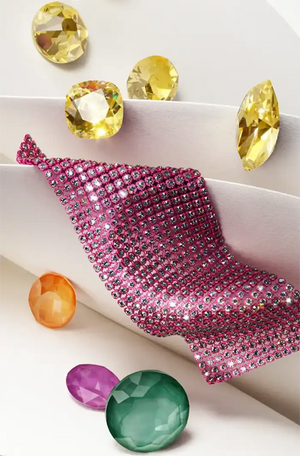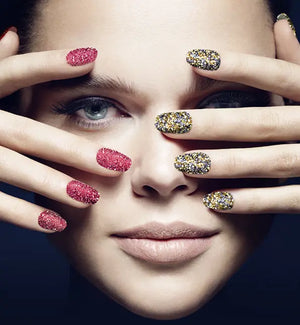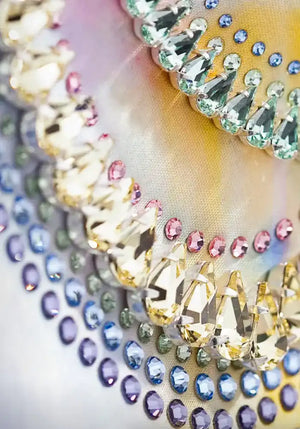
What Are Findings in Jewellery Making and Why They Matter
When it comes to jewellery making, creating handmade pieces to sell can be a rewarding operation, and one that allows you to express your own creativity and flair. But the real magic begins with the intricate elements that hold your stunning pieces together: jewellery findings.
As a crucial component in creating distinctive, captivating designs, findings are an indispensable part of any jewellery maker's toolkit. In the following blog, we'll take a closer look at these essential jewellery components, shedding light on their significance and how to use them effectively in your business. Let’s take a look!
What are jewellery findings?
The term 'findings' in the world of jewellery might be a bit puzzling for beginners. Not to be confused with gemstones or charms, jewellery findings refer to the diverse array of components utilised to assemble a piece of jewellery. In short, they're the nuts and bolts, the framework of your creation.
These elements might include clasps, hooks, jump rings, ear wires, and pins, among many others. They come in different shapes, sizes, and materials like gold, silver, brass, or nickel, making them adaptable to a multitude of creative designs. Furthermore, they can be simple or intricate, depending on your style, adding unique flair to your creations. In essence, jewellery findings are the unsung heroes in the background that, while often unobtrusive, play a crucial role in keeping your jewellery functional and aesthetically appealing.
Why are jewellery findings important?
You might wonder, why are jewellery findings given such importance? The answer lies in their multifaceted functionality:
Durability
Findings provide strength and durability to your pieces. They ensure that your design stays secure and lasts, enabling your piece to withstand the test of time.
Comfort and fit
Jewellery findings are integral in ensuring that a piece fits perfectly and comfortably. An earring wire, for instance, makes it possible to wear an earring, while a clasp ensures a necklace or bracelet stays securely around your neck or wrist.
Aesthetic value
Beyond practicality, findings can significantly contribute to the overall aesthetic of a piece. Choose from decorative clasps, bead caps, or spacer beads to add that touch of glamour or sophistication.
Versatility
The array of available jewellery findings provides limitless creative possibilities. You can experiment with various combinations to produce a piece that suits your unique style and vision.
How do you use findings in jewellery?
Whether you're crafting a simple pendant necklace or a set of extravagant pearl earrings, using jewellery findings correctly is key to achieving your desired result.
>Choosing the right findings
Start by identifying the type of jewellery you're making. This will help determine the necessary findings. For instance, making earrings will require ear wires or studs, while necklaces may require jump rings, clasps, and bead caps.
Assembling
Once you've selected your components, it's time to assemble. This process may require tools such as pliers or tweezers for opening and closing jump rings, attaching clasps, or threading beads onto pins.
Experimentation
There's no hard and fast rule when it comes to using jewellery findings. The joy of jewellery making is experimenting with different styles, techniques, and components to achieve your desired look. Remember, practice makes perfect, so don't be afraid to try, test, and rework your designs.
What are the names for jewellery findings?
In the broad world of jewellery crafting, there are countless types of findings, each with its unique function and name. Here are a few common ones that you should be familiar with:
- Jump rings
- Ear wires or hooks
- Head pins and eye pins
- Clasps
- Crimp beads
- Bails
- Spacer beads
Don’t forget that these are just a handful of the most common findings. Depending on your creativity and complexity of design, you might require more specialised types.
FAQs
What material should I choose for my jewellery findings?
The choice of material largely depends on your design, budget, and personal preference. Options range from precious metals like gold or sterling silver to more affordable alternatives such as brass or nickel. Remember to consider skin sensitivities, as some people might be allergic to certain metals.
Where can I purchase jewellery findings?
You can buy jewellery findings from various online retailers - such as us here at Bluestreak Crystals - arts and crafts stores, or specialised bead shops. Make sure to purchase from reputable sources to ensure quality.
Is it necessary to use tools while working with jewellery findings?
Yes, having a set of basic jewellery-making tools, such as pliers and cutters, can greatly aid in crafting. They help open and close jump rings, crimp beads, cut wire, and more, ensuring your pieces are well-assembled and secure.
Can I make my own jewellery findings?
Absolutely! If you're interested in creating completely bespoke pieces, making your own findings can be rewarding. However, this requires additional skills, tools, and materials. Beginners might find it easier to start with pre-made findings.






